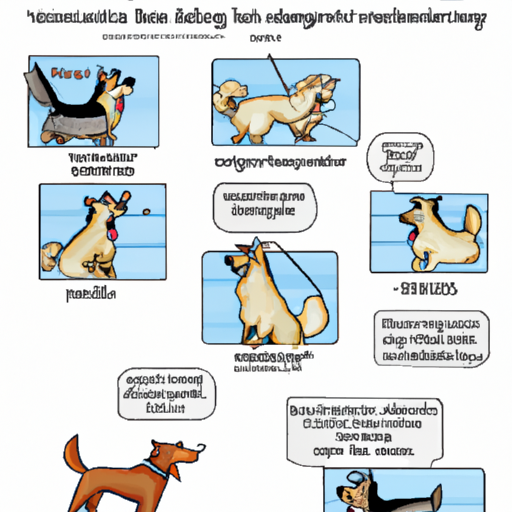Understanding Your Dog’s Body Language
Dogs communicate primarily through body language. Yes, they bark, whine and growl, but their body language is the most telling form of communication. When you learn how to interpret your dog’s body language, you will understand them in a whole new way.
For instance:
– A wagging tail doesn’t always mean a happy dog. It’s an energy indicator. If your dog’s tail is wagging with relaxed body, they’re probably happy. If their tail is stiff and wagging, it could mean they’re agitated.
– The positioning of their ears can indicate their mood. Forward ears mean they’re engaged, while pinned back ears indicate fear or submission.
– Puffed out fur can be a sign of fear or aggression.
Decoding Dog Sounds
Understanding the sounds your dog makes is also crucial. Different barks can mean different things. Here’s a quick guide:
- Continuous, rapid barking at a mid-range pitch: “Call the pack! There is a potential problem!”
- Barking in rapid strings with a few pauses at a mid-range pitch: “I suspect there may be a problem. There could be an intruder.”
- Prolonged or incessant barking, with moderate to long intervals between each utterance: “Is there anybody there? I’m lonely and need companionship.”
Recognizing Dog Facial Expressions
Dogs also use facial expressions to communicate. They can smile, frown, and even make a “guilty” face. Keeping an eye on your dog’s facial expressions can help you understand their emotions better.
A relaxed dog typically has a soft eye shape with a mouth slightly open or closed. If a dog’s eyes are wide and tense, it often indicates they’re feeling aggressive or scared.
Communicating with Your Dog
Just as you’re trying to understand your dog, they’re also trying to understand you. Dogs are very good at reading human body language and will often mirror their owner’s emotions. Show them love and kindness, and they’ll respond in kind.
You can also train your dog to understand certain commands. Consistency is key here. Use the same words and gestures every time, and reward your dog when they respond correctly.
Understanding Dog-Dog Communication
Dogs communicate differently with other dogs than they do with humans. They use a variety of signals, like body postures, facial expressions, and vocalizations, to communicate with each other.
For example, dogs often use play bows (where they put their front legs on the ground and their back end in the air) to indicate that they want to play.
FAQ
Q: How can I tell if my dog is anxious or scared?
A: Signs of anxiety or fear in dogs include excessive barking or whining, trembling, hiding, and showing the whites of their eyes.
Q: What does it mean when my dog stares at me?
A: Dogs stare at their owners for many reasons—sometimes it’s a sign of affection, other times they might be hungry or want your attention.
Q: How can I communicate better with my dog?
A: Consistent training, patience and positive reinforcement are key. Learn to understand their body language and respond accordingly.
Q: What does it mean when a dog’s tail is tucked?
A: A tucked tail often means a dog is scared or submissive.
Q: Why does my dog growl when he’s playing?
A: Growling during play is usually harmless. It’s when growling is paired with aggressive body language that you need to be concerned.



